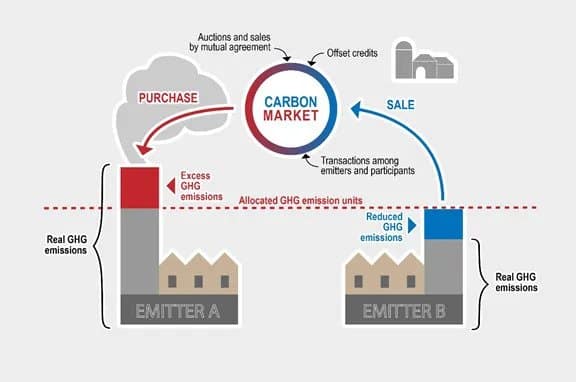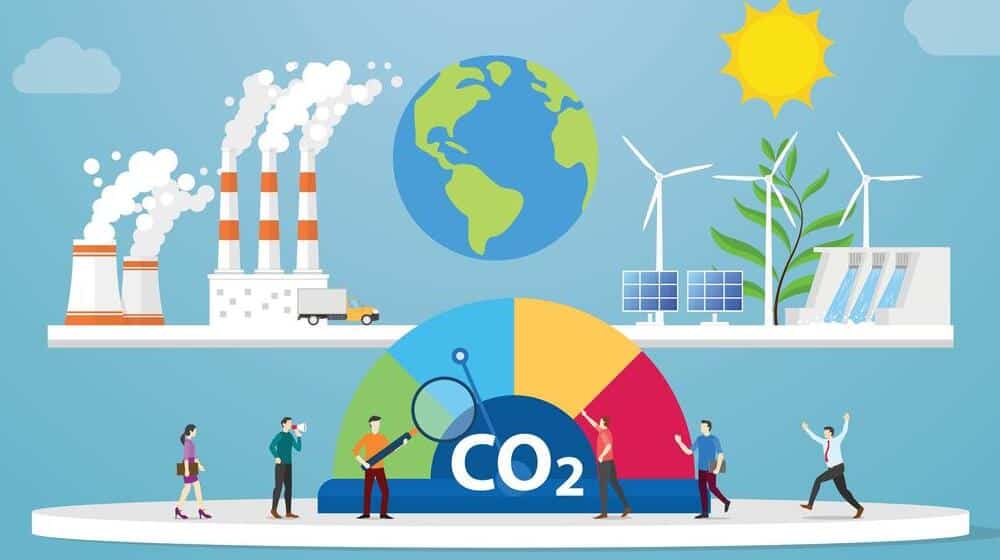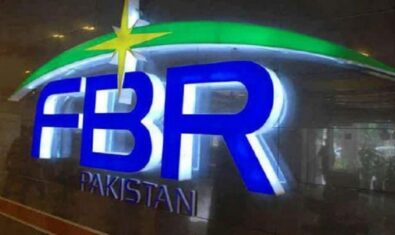The world is falling short of the climate goals set under the 2015 Paris Agreement as we enter the era of ‘global boiling’ as United Nations has put it.
It’s increasing the need for more disruptive technologies in this fight for the future and carbon credits have been touted as one of these games changing solutions that can tip the balance in our favour.
On the other hand, Pakistan’s startup ecosystem, once fueled by a surge of venture funding but not indifferent to the global economic slowdown, is finding itself navigating some stormy waters while agri-tech is already built on attempting technology penetration through an economic class of late majority adopters.
It’s not just about handing over devices or setting up technology infrastructure that the country lacks, it’s about changing a mindset that needs a lot more time and capital in R&D than available in the system at the moment. Carbon markets can provide suitable breathing space to startups by unlocking more climate-based financing and a much-needed revenue stream in the near future. So, we talked with industry stakeholders about the need and potential of such a pivot into this emerging market.
Pakistan Agri-tech Landscape and The Possible Pivot
The VC-funded agri-tech startups in Pakistan can be counted on fingers, this is nowhere near the potential of the agriculture revolution we may need and that is because this space is not governed by some supply-chain-based economic theory you can crack through crunching numbers in a financial model, it is often run by collusion among actors that are out of the regulated economy.
It true that not every agri-tech startup is scalable and it all depends on what exactly you’re doing and the founders’ ability to navigate these challenges,” stated Faisal Aftab, Founder and General Partner at Zayn Capital while talking to ProPakistani.
Talking about the carbon market, he added that this is right around the corner and it is going to be massive in the next couple of years. So, I think it’s a good time to come up with ideas and prepare your tech but not the best time to rush it through as some founders often attempt especially with verticals for which our country is not yet ripe.
On the other hand, the agri-tech startups built by enthusiastic young founders, bootstrapping their way inch by inch through this mess are in dozens and that describes the resilience of change that’s looking to happen despite challenges. Carbon marketplaces provide the best tool to diversify revenue streams, tap into more sustainability and impact-oriented investors and build on existing farmer relationships.
Companies with the technical infrastructure of tracking carbon content can provide verification services and become carbon credit aggregators, others with enough capital can build projects in partnerships with international investors and some others can build block-chain based marketplaces where these credits can be traded.
Agri-tech startups like us already have a climate aspect built-in by promoting the efficient use of resources and increasing food sustainability without increasing carbon footprint.”, stated Muzaffar Manghi, co-founder of Farmdar while talking to ProPakistani.
He said that companies like Farmdar have clear technical expertise to track the carbon offset and that is a space they will be active in at some time in the future.
So what are exactly carbon credits and how do they work? Let’s dive in!
What Are Carbon Credits and Where Pakistan Stands?
The US government introduced a cap-and-trade program in 1990 to address the sulfur dioxide emissions from the coal-based power plants that were causing acid rains damaging all living and non-living alike. It set a cap on emissions and introduced a separate market where firms could sell their allowances/credits if they don’t intend to use them or buy more if they exceed their limits.
It is one of the most prominent success stories told in the history of the climate movement as the Environmental Protection Agency reported a 30 percent drop (6.5 million tons) in SO2 emissions from utilities between 1980 and 2010, with over $50 billion in health benefits. It employed both carrot and stick, as credit costs rose over time due to supply and demand dynamics, nudging the shift toward cleaner energy sources.
Today, the global carbon market stands at $978 billion and is destined to cross $2.68 trillion by 2028 at a whopping CAGR of 18 percent. Some 12.5 billion metric tons of CO2 was traded in 2022 in the global carbon market and experts predict that if done right, this trading mechanism can almost double the reduction in global emissions and channel the funds to poorer countries for climate adoption and protection.

How Carbon Market Works?
Pakistan has only one carbon credit project under the current regime of the 2015 Paris Agreement and that is the Delta Blue Carbon (DBC) Mangroves Project aimed at protecting and restoring 350,000 hectares of coastal wetlands, removing 142 million tons of CO2 emissions in 60 years and promoting the well-being of 42,000 people living in the protected zone through diverse income opportunities.
In June 2023, the first auction of 50,000 tonnes of credits through CIX, a joint venture of DBC, Standard Chartered, Singapore Exchange (SGX), and Singapore’s state investor Temasek was oversubscribed more than 50 percent, highlighting how much the demand exceeds the supply of carbon credits at the moment. Sindh stands to earn $220 million by 2043 with 21,000 green jobs and that is just one project.
Sizing the carbon market in Pakistan is not easy as there is only one success story, although I am sure there are a number of others in the pipeline.”, said Vardah Malik, Climate Finance Expert and CEO Profectus Advisory Services while talking to ProPakistani.
She added that Pakistan is a very small player, unlike Thailand, Vietnam, India, Mexico, and Chile. Even Gulf countries are bringing a number of carbon credit projects but the mangrove project has attracted significant interest in a number of circles.
She also said that Pakistan lacks any legal and institutional framework and necessary monitoring, reporting, and verification registry (MRVs) which all countries are bound to have for successfully operating a voluntary carbon market. The concessional climate financing in Pakistan is only coming in the backdrop of floods while impact-oriented investors are hesitant at the moment as our capacity, project designs, and ability to deliver is unproven.
Pakistan ratified the Kyoto Protocol in 2005 but by 2012, our share in Clean Development Projects (CDM) was less than one percent while China and India had 60 percent and 30 percent share in global CDM projects. We missed that opportunity and we stand to miss our current chance as well as Ministry of Climate Change has yet to establish a registry.
National Climate Change Resilience and Adaptation Plan 2023 published last month talks at length about the challenges and opportunities spurring out the worsening climate crisis but fails to clearly define the actions and required steps needed for localized plans or the obstacles that exist or will come in the way of adaptation plans.
Unlocking Climate Financing and Future Ahead
Although farming businesses have not been at the forefront of obtaining accreditation for carbon credit generation, there are examples of forestry projects that have been acquiring large tracts of land and setting up carbon-offsetting forests.”, stated Usman Javed, Manager Transaction Execution at InfraZamin which provides financing to projects aimed at sustainability, poverty reduction and financial inclusion.
Interestingly, he said that given that InfraZamin’s core focus is on generating a development impact, therefore, businesses generating carbon credits or offsetting pollution will fall under the ambit of IZP financing.
This trend has just started picking up as nobody even knew of the voluntary carbon market in Pakistan like two years ago. At the moment, international donors like Global Green Growth Institute (GGGI) are studying Pakistan for possible frameworks under the SPAR6C program while USAID is also working on streamlining the requirements like the respective roles of the government and private sectors, how the registries would function, how different entities would communicate with each other.
All of it means that both international and domestic investors and financial institutions would be eager to deploy capital in these projects including startups as soon the government comes up with a framework as this space is often heavily regulated in light of a number of instances of greenwashing internationally in the past.
Faisal Aftab also stated that he is certain Federal Reserve will ease the policy rates next year and the funding environment will be better. He said that while he foresees a bigger market correction by the end of 2025 in economies having a high debt-to-GDP ratio, Pakistan has a large chunk of its economy still undocumented and is not operating on debt, so he is still bullish on Pakistan.
The one more thing all the experts were certain about is that there is going to be chaos over how to deal with the climate crisis in a few years as El Niño weather coupled with surging geopolitical divides stands to throw the world into the spiral of food insecurity.
Soon a lot of individuals and entities with capital will start searching for solutions and at that point, people who are already working in this space with some reputation will stand a better chance at success.





















